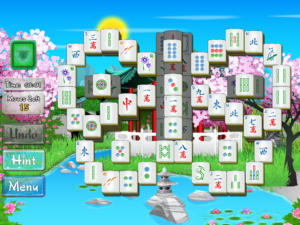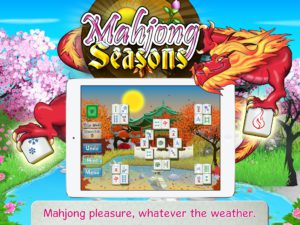The Mistake of Mahjong Seasons
As a small indie games developer, business mistakes can be deeply painful. Here we share our biggest mistake with the game Mahjong Seasons. We wanted it to be beautiful, brilliant and big. We wanted it to be perfect! We threw time, effort and money at creating the best Mahjong game out there to try and be the PopCap of Mahjong.
Oh, how we failed…
2014 was a heady time for the tech industry, which thought tablets would rule the world and replace PCs. It was also the year we released Mahjong Seasons. We loved the form factor. We knew our games were best experienced on the iPad (this was back when we only supported iOS). We wouldn’t compromise on quality and make a weaker mobile version; it was to be iPad only. The decision alone meant that it was unavailable to the huge number of potential iPhone players. Worse still, mobile phones got bigger and better, making our decision to ignore their furtherment short sighted. Tablets are still important as great consumer devices, but they didn’t and won’t take over the world.
Our perfectionist attitude to the game’s development meant we had massive, long-winded debates over things like the level select. That bloody level select! We developed a massively time-consuming streaming code, which would allow players to scroll through levels. This was visually redesigned several times. Heck, even the way a player scrolled through the levels was debated and refined a multitude of times. And you know what? It didn’t matter. We put so much focus on this area that we increased the development time by months! We should’ve gone with a simpler design, knowing now that most players really wouldn’t have minded. No one in the company voiced that we should be spending our time on other things, we just had to do it right.
The mistakes don’t end here. We created a poor combination of revenue generation with a badly thought-out balance of advertising and purchased level packs. Instead of maximising revenue per player, we reduced it. We could have a created a game that had randomly selected levels that would be played more often, but our problem was that our game was level based. This limited the amount of time any player would take enjoying the game, reducing the advertising revenue. In fact, this business model, married with our design, conspired to create a game where we ended up with an average revenue per player of $0.22. This is worst revenue per player from any of our games.
The artwork was redone several times. We created beautiful effects as the player enjoyed the game, delicate animations and delightful particle effects, all of which required a significant amount of coding. Each little item stacked up: the time, cost and debates on whether it was good enough. Each tweak and rework eventually sapped the morale of the team.
After almost a year, it was ready. It looked good, it felt good and we were proud, too. We unleashed it with the most expensive advertising campaign that this little company had ever done and then –
It flopped.
The hope was that the advertising would get it noticed and give it traction. The reality was that, after the advertising campaign, it became one of the least downloaded games we have ever made.
But we weren’t even done there. We knew the game would never make any money, that the amount of people finding it and enjoying it would be miniscule. But out of pride and loyalty to the few players we had, we made one more level pack. Something for the tiny number of loyal players. It was a nice thing to do for players, if not a little delusional, benefiting maybe a few hundred of them, but it increased the cost of making the game upward again. Really, why? Why spend another penny on something that had so obviously been ignored by the casual gaming public? In retrospect there was no proper business-minded justification for this extra effort, only a desire to be a supportive game developer who really valued their loyal players.
The game failed to make back even 5% of its developing and marketing cost, and everyone’s confidence plummeted. After a year, this was the final nail in the coffin and it was hard to face.
After its one update, we let it stay on the App Store, picking up the occasional download in the hope it would quietly accrue the final few cents of revenue. By 2017, it was taken unceremoniously off the App Store.
I wish I could say there was an upside in going through this project, but much of it was heartache and headache. We learned from our mistakes and developed some technology, although we didn’t reuse most of it. We lost so much time doing it that it’s horrible to write about even to this day.
But why should you make the same mistakes we did? Here’s our take home advice to avoid this kind of wasted effort.
- Don’t overdesign and over scope your game. We should have limited our main efforts to the actual playing experience rather than elements, like the level select screen.
- Know when to give in. When a game looks like it won’t bring you any additional revenue, that is the time to cut your loyalty to your players. Our efforts to bring an additional level pack lost additional money and time for us.
- Think about your business model. An advertising-based game thrives on re-playability. A game with in game level purchases thrives on people wanting new content. Our game failed on both counts by incorrectly combining both.
- Support as many platforms as is feasible. Our mistake was supporting tablet only. We should’ve made it compatible with mobile phones, even if that reduced player enjoyment a little.
- Advertising. Advertising can give a game traction, but if it looks like it is failing even with a solid advertising campaign then it’s time to cut it off.
Good luck!
Mark


